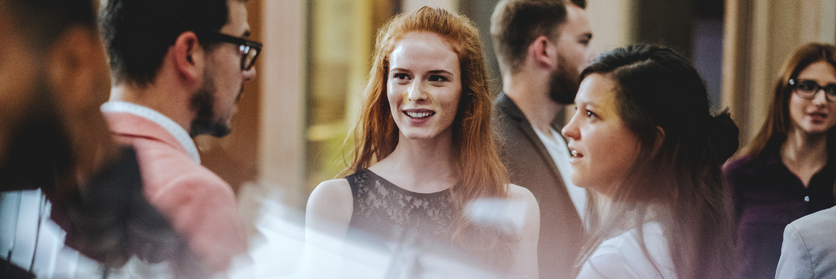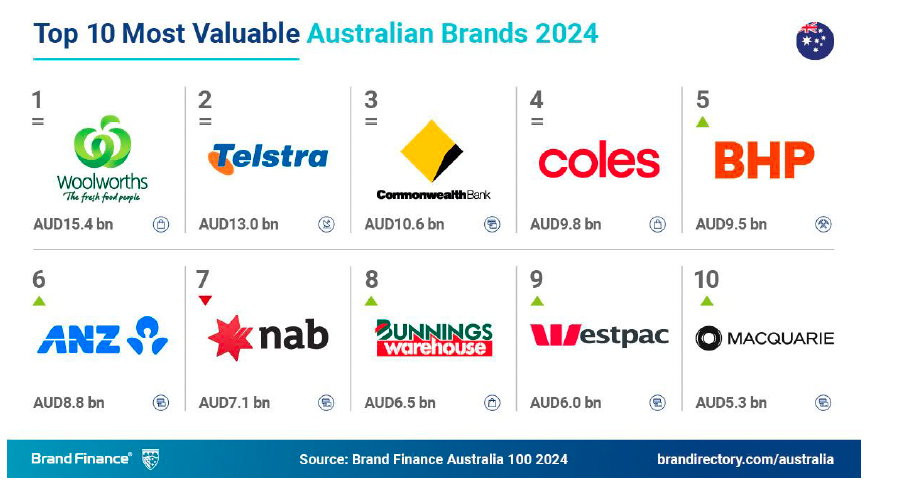‘We’re in stormy, heavy seas’: Lion growth chief turned co-MD on culling products, exec overhauls, nailing wins – and the ‘dumbest thing’ marketers can do after investing in brand

What you need to know:
- After successfully navigating her way through a 500-day challenge to prove Lion could unlock new growth opportunities to deliver tangible business value, Anubha Sahasrabuddhe is bringing the know-how back into the business as co-MD alongside industry veteran, James Brindley.
- Through the growth challenge, which saw Lion pull together disparate capabilities from marketing to supply chain, ventures, IT and digital, the team launched Hyoketsu, a premium beer brand from parent company Kirin, in under 12 months in ANZ. It’s now number one in NZ and top five in Australia.
- Ichiban, another premium Japanese beer, which also reflected a new style of business case and new supply chains in the US and Australia, plus a fresh take on economics and execution, is now the fastest growing premium international beer in Australia.
- As co-MDs, Sahasrabuddhe and Brindley have established a new-look leadership team, bringing the growth capabilities back into the core business. The changes include a new CFO and a CMO with expanded remit, and a newly created commercial director role.
- With a through line of brand power as pricing power, the pair have also aligned sales and marketing using co-owned, brand-led metrics such as salience in order to drive a more unified approach to demand generation.
- Topline revenue growth is the north star – even at the expense of some profitability – in order to capture the next generation of consumers with completely different tastes, behaviours and drinking preferences.
- A declaration of going after more RTD and spirits business – and keeping beer vibrant – is another commitment and key part of the strategic ambition. Per Sahsrabuddhe: “If you’re not understanding where the consumer is going, and you are not meeting them where they are, then more importantly, taking them into the future, you’re dead. You’re literally dead.”
- Then there are the brand decisions to make, i.e. which to keep, which to cull.
- “Where we came from was this belief all our brand children are created equally, which clearly they’re not. The reality in terms of what is actually growth potential that you match with changing consumer expectations and your ability to execute, then creates a very clear set of choices,” she says, noting rationalisation of product portfolio is an inevitable part of this process.
- As co-MDs with very different subject domain expertise and career histories, Sahasrabuddhe says she and Brindley rely on trust, respect, a commitment to making tough decisions and compromise to lead the way through the next part of Lion’s transformation.
What they are drinking, when they drink, how they drink if they drink at all – honestly, that is one of the biggest catalysts. If you’re not understanding where the consumer is going, and you are not meeting them where they are, then more importantly, taking them into the future, you’re dead. You’re literally dead.
Twelve months ago, Lion’s 500-day chief growth officer and former CMO, Anubha Sahasrabuddhe, became co-MD alongside alcohol industry veteran and the man who recruited her into Lion in the first place, James Brindley. The promotion came hot on the heels of a transformational run to prove the beer behemoth could counter dwindling beer consumption, structural decline in alcohol more broadly, and multicultural Australia’s changing palette. The work involved building a foundational engine that combined consumer insight and brand power with technology to unlock growth – no mean feat after a decade of underinvestment into brand.
To do it, Lion pulled together disparate capabilities, from marketing to supply chain, ventures, IT, foresight, digital and demand gen into a new growth unit, led by Sahasrabuddhe. The job was to create tangible value, leveraging strategy and brand foundations first, then build the structure and opportunity to follow it through.
She put runs on the board. Hyoketsu, a premium beer brand from parent company Kirin, was launched in under 12 months in ANZ and is now number one in NZ and top five in Australia. Ichiban, another premium Japanese beer, also reflected a new style of business case, with new supply chains in the US and Australia, plus fresh take on economics and execution. It’s now the fastest growing premium international beer in Australia, according to Sahasrabuddhe.
“That really helped give us the evidence for the whole organisation that a growth mindset in a very literal way, with some tangible proof points, was a way for us to believe again that we could actually grow in a category, frankly, that is declining, as everyone knows,” she tells Mi3. “Before that, we had no brands in growth. By 2024, we marked a milestone, with more than five brands in double-digit growth.
“Now, as we come back into the business unit with those newly minted capabilities we keep homing… that mindset is moving from just being ‘poor me’ facing the macro and consumer trends, and is now about what’s possible. More importantly, the proof points are in the consumer and customer feedback. Are consumers responding? Are we recruiting people into the category? Are we increasing share? Is our brand equity going in the right way? Yes, yes, yes and yes. The retailers, the publicans – we’ve moved from 11th position in our customer survey to number two and we’re very much gunning for number one.”
Another less tangible measure – word on the street – also indicates interest in where Lion can go next. “For my first three years at Lion, when I went around the country and talked to sales or customers, all they asked me about was our competition, and what we were doing about them. It was all reactive talk,” says Sahasrabuddhe. “No one talks to me about the competition anymore. We’ve got a clear agenda, we’re proactive. We have a strategy we’re executing based on what we believe the market opportunity is. There will always be tactical responses to competitors, but there has been that shift in dialogue from ‘oh my god, they’re killing you’ to ‘what are you doing next?’.”
What co-MD means and how a marketer manages the job
But even with such momentum, there’s plenty to do. Which is why the growth team has been dismantled, and Sahasrabuddhe now finds herself sharing the MD remit with former boss, Brindley. The pair have just finalised an overhaul of Lion’s leadership ranks, structures and ways of working. The rationale behind having joint chiefs, one with an FMCG marketing pedigree, the other category and commercial leadership? Accelerate by having a duo that can do twice as much, twice as fast.
The fresh leadership team, meanwhile, includes a new CFO, plus new CMO, Glenn Brasington. Formerly a global marketer with Pernod Ricard and the ex-CEO of Hawke’s Brewing Co., Brasington takes on an extended remit absorbing ventures, some experimentation capabilities, and the foresight team alongside insights and innovation. The CMO also shares joint accountability with Lion’s sales director for brand metrics such as salience, equity and demand funnel. It’s a reflection of Sahasrabuddhe’s multi-year efforts to connect a through-line on demand across the Lion business.
In addition, a commercial director role has been created. “Specific skills around revenue, growth, management, category and execution are skills we think are a competitive advantage. So we have created that role, again reporting to us, to have an end-to-end commercial value chain, starting at the consumer and ending on the shelf, in the fridge or cool room,” Sahasrabuddhe explains.
A declaration of going after more RTD and spirits business is another commitment. With two drinking-age kids of her own, Sahasrabuddhe has firsthand insight into how different consumption behaviours are across the new generation of prospective drinkers, and it’s been a huge driver of strategic ambition.
“What they are drinking, when they drink, how they drink if they drink at all – honestly, that is one of the biggest catalysts. If you’re not understanding where the consumer is going, and you are not meeting them where they are, then more importantly, taking them into the future, you’re dead. You’re literally dead,” she says.
Getting the demand funnel right is not just having the right roles either, but about the way the sales force and key accounts all join up to be able to win in that category. “Previously, the dabbling was in marketing to go ‘here is what we do’. Dabbling is not a strategy,” Sahasrabuddhe says.
“Now it’s end-to-end, including the supply chain, where we have made changes to ensure we can have small-scale supply solutions for test and learns in emerging brands. But then we also have our big, efficient solution in one of our breweries, so we really do have the flexibility to be able to fully participate and compete. As everyone knows, when you’re building a business, those volumes and minimums can be really prohibitive. We wanted to make a network and supply chain equipped to answer consumer demand, even if it comes in smaller ways. That’s the wiring of the whole enterprise against that common strategic ambition which James and I have been able to do over the last 12 months.”
That’s not to say Lion is taking its eye off beer, or the ambition to keep it vibrant and growing.
“It’s the ‘and’ – you can’t be myopic about where the potential is,” Sahasrabuddhe says. “The population changes are so significant: 30 per cent of Australians are born overseas and their palates, their preferences, are so different. To not recognise that and see that as an opportunity is leaving value on the table. And it’s not just two brands in one category. It’s understanding repertoires and the way we drink is change – today, it’s experimental and broad. So again, you’ve got to be there if you want your fair share of growth.”
We had a philosophy that we would make tough calls quickly. I would say all the changes we made in the leadership team are examples of that. As you go in your career, this is not about whether the person is good or bad, it’s whether they are fit for purpose. I always say there are fair weather sailors and there are sailors that do better in stormy, heavy seas. We are in stormy, heavy seas.
Brand story, not one-hit wonder
Sahasrabuddhe and Brindley are now working to execute against their strategy, to prove the 500-day growth win wasn’t a one-hit wonder.
“As we start to look at things like supply chain, for example, how do we have two-speed innovation when we’ve got a big beer business, but then as we want to step change our position in other categories, like ready to drink or spirit, and what does that mean in terms of end-to-end capability? The ability both of us have to orchestrate across the business, inclusive of that type of stuff, really brings it all together. And the starting point is the consumer,” she continues.
Then there are brand decisions to make.
For Sahasrabuddhe, a hallmark of achieving growth consistently is focus. “Where we came from was this belief all our brand children are created equally, which clearly they’re not. We have a gigantic portfolio of legacy and all sorts of fabulous things. However, the reality in terms of what is actually growth potential that you match with changing consumer expectations and your ability to execute, then creates a very clear set of choices,” she says, noting rationalisation of product portfolio is an inevitable part of this process.
Last year, Lion shut down the Malt Shovel Brewery it purchased in 1993 and also moved some Boag’s Brewery production from Tasmania onto the mainland; the year before, it shut the Queensland-based Tiny Mountain Brewery.
That’s what has made the move from CGO to co-MD role such a significant one. Sahasrabuddhe says she can now execute exactly against those choices and not have it become “a pick-and-mix for your salespeople in different states”.
“Freedom within a framework is great, but you better have a very, very defined set of parameters, which we have now worked out by state, nationally. That matrix of choices, and importantly, how we incentivise both our customers and our salespeople, ensures all of that wonderful strategic mapping of growth opportunity and potential for a choiceful portfolio actually shows up in the market,” she says. “Legacy is always painful to change. People are really emotionally attached to some of those legacy brands. But growth is the best defence against all of that.”
Being a co-MD
Being a co-MD is a fairly rare gig, and Sahasrabuddhe is quickly getting used to being asked how it works in practice. She cites the starting point as trust and respect.
“We’ve turned up at roadshows, town halls and all of that, saying ‘no, it’s been 12 months, we’re not kidding, this is how we are’. We absolutely disagree on things, but the way we do that, I think, is constructive. And it’s what we want to build in our culture,” she comments. “You can agree to disagree, but then you need to be a line of one and stand behind a decision. Robustness of debate is key too – we’re pretty direct, straight-up people, and because we have that trust, we know there’s no agenda other than what’s the right decision for the business.”
Sahasrabuddhe’s and Brindley’s skill sets are complementary and there is no “you’re in my territory” fear, she adds.
“We call ourselves interchangeable. We’ve got our domain expertise, because everyone does when you come up through business. But right now, it’s not about that. It’s actually about what are the problems to solve, and how do we remove obstacles from the team’s ability to get after that growth,” she says.
In her favour, Sahasrabuddhe points to her very different background and FMCG marketing stripes. Prior to Lion, she was global VP marketing for Mars based in Chicago, and also previously oversaw marketing in the Philippines and China for The Coca-Cola Company. “It gives me an ability to push an industry that perhaps sometimes isn’t as progressive as it needs to be – whether that’s strategically, or from a brand standpoint,” she says.
“We also had a philosophy when we came in, James and I, that we would make tough calls quickly. I would say all the changes we made in the leadership team are examples of that. As you go in your career, this is not about whether the person is good or bad, it’s whether they are fit for purpose. I always say there are fair weather sailors and there are sailors that do better in stormy, heavy seas. We are in stormy, heavy seas.
“When you’re in transformation, we need people absolutely prepared to ride out those storms, because they come fast and frequently. The mindset and the leadership are far more important than the capability itself, because technical capabilities are table stakes and already a given.”
The other must is making hard, unpopular decisions.
“You need to be respected, because there’s going to be plenty of people that don’t like what you’re doing. But you’re thinking about the long-term, and you’ve got to think about the thousands of people employed by Lion, not the one person you might piss off because they don’t like the decision you’ve made,” says Sahasrabuddhe.
Why we invest in brands is so we can get better price realisation. Because the dumbest thing would be to invest in brands, drive ‘equity’, then have them be commoditised or have us discounting the crap out of them. Literally, without being a cliché, that's a bloody journey. For 10 years before this, we'd been commoditising, not investing, and it's a race to the bottom. This category, when it is challenged, becomes that.
Brand power as pricing power
As a self-described “Ying and Yang”, there’s also the big question of how the co-MDs find alignment on metrics, measurement and business value. For Sahasrabuddhe, the simplest way of talking to someone with a strong commercial background is to show the bottom line of brand power as pricing power.
“Why we invest in brands is so we can get better price realisation. Because the dumbest thing would be to invest in brands, drive ‘equity’, then have them be commoditised or have us discounting the crap out of them,” she says. “Literally, without being a cliché, that’s a bloody journey. For 10 years before this, we’d been commoditising, not investing, and it’s a race to the bottom. This category, when it is challenged, becomes that.
“Now, with this focus of brands and our portfolio choices the questions are: Where and how do we premiumise? How do we make sure a Stone & Wood or Itchiban and Guinness – these incredible premium brands we’re investing in – are in a position where we’re able to realise the price and still grow the top line? That is not perfect across portfolio, but that’s where we need to get to. Because otherwise we can’t justify the investment. It’s as simple as that.
“People are patient for the long term, but it is all about the steps you take as to how you get price realisation. Take discounts: Little by little, you start to wean people off the drug of promotions and discounts and pack price, looking at how you get clever about that. That is a long-term play. I say it’s a decade play in order to really create value while growing. These are the ways to really help people, including someone like James who hasn’t come from a pure marketing background, understand why we need to stay the course.”
Top-line growth pursuit
More broadly, and since Lion began this transformation, top-line growth has become the critical North Star. “We’ve gone through restructures like everybody else, because you’ve got to keep an eye on the cost base and everybody’s doing it globally, we are hardly unique. You can’t bitch and moan about that,” Sahasrabuddhe says.
“But it’s about top line, even though profitability can be really challenged when you’re investing ahead. We did adjust our bonus structures to reflect the importance of top-line growth as we wanted to send a signal to our business, that this is really important, and that we’re prepared to take a bet and investment by having some profitability short-term challenges. That’s in order to stake out the right position by growing revenue.”
The reason that’s really important is because historically, Lion had focused so much on the bottom line.
“That’s why we lost two generations of consumers,” Sahasrabuddhe admits. “Of course, we want to be profitable, but the starting point is start to grow the top line.”
Underneath that is tracking equity in brand. “We’re investing a heck of a lot in our brands relative to our industry and competition, because we knew we needed to make up a decade of underinvestment,” she continues.
“We have a whole lot of metrics – leading and lagging – in the classical marketing sense of metrics: Brand equity and funnel; plus salience, which is really important when you’re growing focused brands. Salience is one of the most dynamic things you can influence first and has the biggest contribution to what we call brand power.”
Most importantly, those metrics are co-owned by sales and marketing, with salience the primary metric. “These are not marketing metrics. Salience is not just my channel selection in digital and broadcast, whatever, it’s what happens in the store,” she argues. “We call it ‘perfect store’: Is the store the way we need it to look? Because that is huge in terms of the impact on brand salience.”
I encourage anyone, whatever type of new role you're stepping into, to know the simplest questions are often the things that point to where the sacred cows or blockages can be. I found that really liberating.
Getting comfortable with a lack of subject matter expertise
While Sahasrabuddhe credits her FMCG marketing grounding for a strong commercial nous, holding the CGO role helped her go beyond her comfort zone by managing other functional teams – most notably, IT.
“That really helped me understand the value of this learning: Not being a subject matter expert is perfectly okay. Indeed, both the simplicity and naivety of your questioning can unlock amazing things,” she says. “I learned that hugely by taking on IT. I had no clue other than to bitch and moan like everybody else when my stuff didn’t work. Then I was given digital technology, including infrastructure – not just the core front end of it, which CMOs have, that’s not unusual. It was the steepest learning curve and it grounded me in the humbleness and humility to go, I’m never going to be a domain expert, but I do have to get better at asking the right questions so my experts can thrive.”
In transitioning into a co-MD role, she faces the same challenge.
“When I went around all the breweries – don’t get me wrong, I feel I have a reasonable understanding of supply chain – but I also got to ask questions as I’m not a brewer. That helps unlock problems or sacred cows,” Sahasrabuddhe says. “I encourage anyone, whatever type of new role you’re stepping into, to know the simplest questions are often the things that point to where the sacred cows or blockages can be. I found that really liberating.”
It’s also to be expected working so closely with Brindley has challenged Sahasrabuddhe’s perspective as a marketer too. A big one is the on-premise channel and significance of three to five-year ‘pourage rights’ deals.
“When I entered Lion, I’m like, ‘marketing doesn’t do that, we don’t want to and don’t need to do that, you do it with your money, don’t touch ours’. I think we’ve both come to see the give-and-take for customer and consumer. Not every time is it perfect for marketing, nor by the way, is it perfect for sales every time either, and we have put things down, saying that’s too much, we can’t justify it. It’s forced me to open my mind about that,” she says.
The upshot is marketing becoming more creative about making such partnerships more effective.
“For example, we have sponsorship of the Victorian Racing Club’s Melbourne Cup – enemy territory for us [Victoria]. We’re going to be doing some incredible experiences with our key focus brands, reframing and contemporising what that can mean for some of our consumers,” says Sahasrabuddhe. “Melbourne Cup is a premium experience, so we’re now attaching the right brand with the right experience. It could do amazing things for our national reach for that particular brand.”





